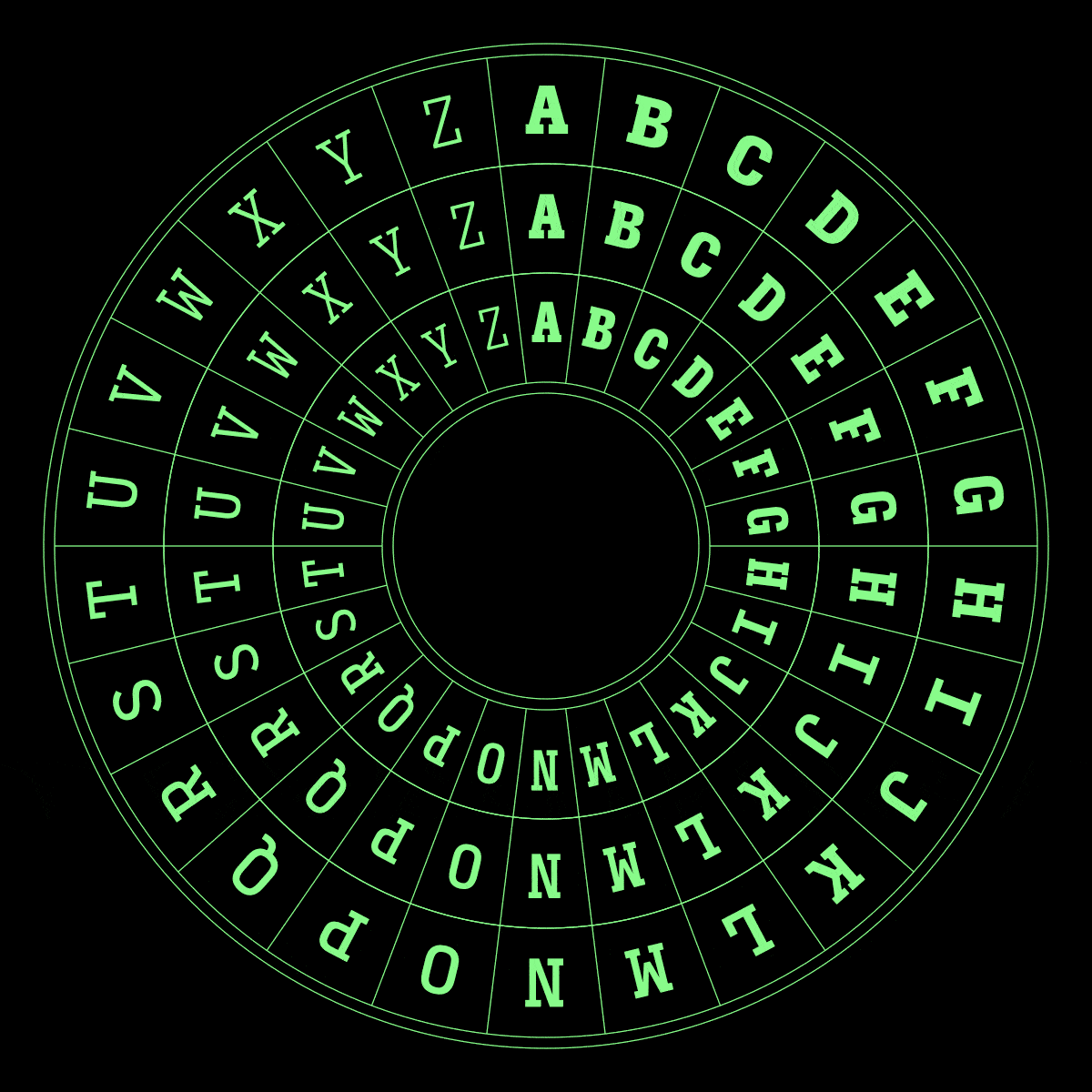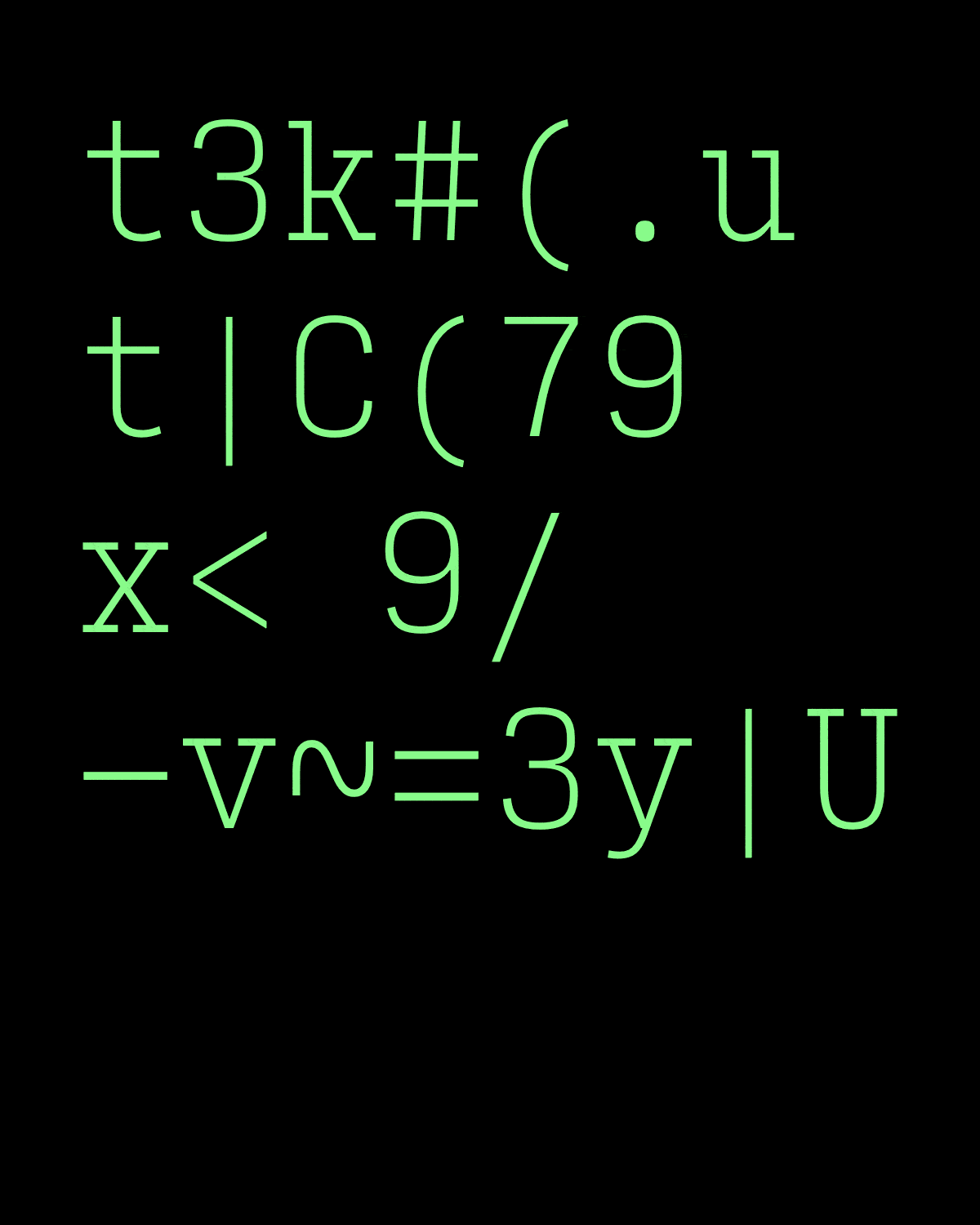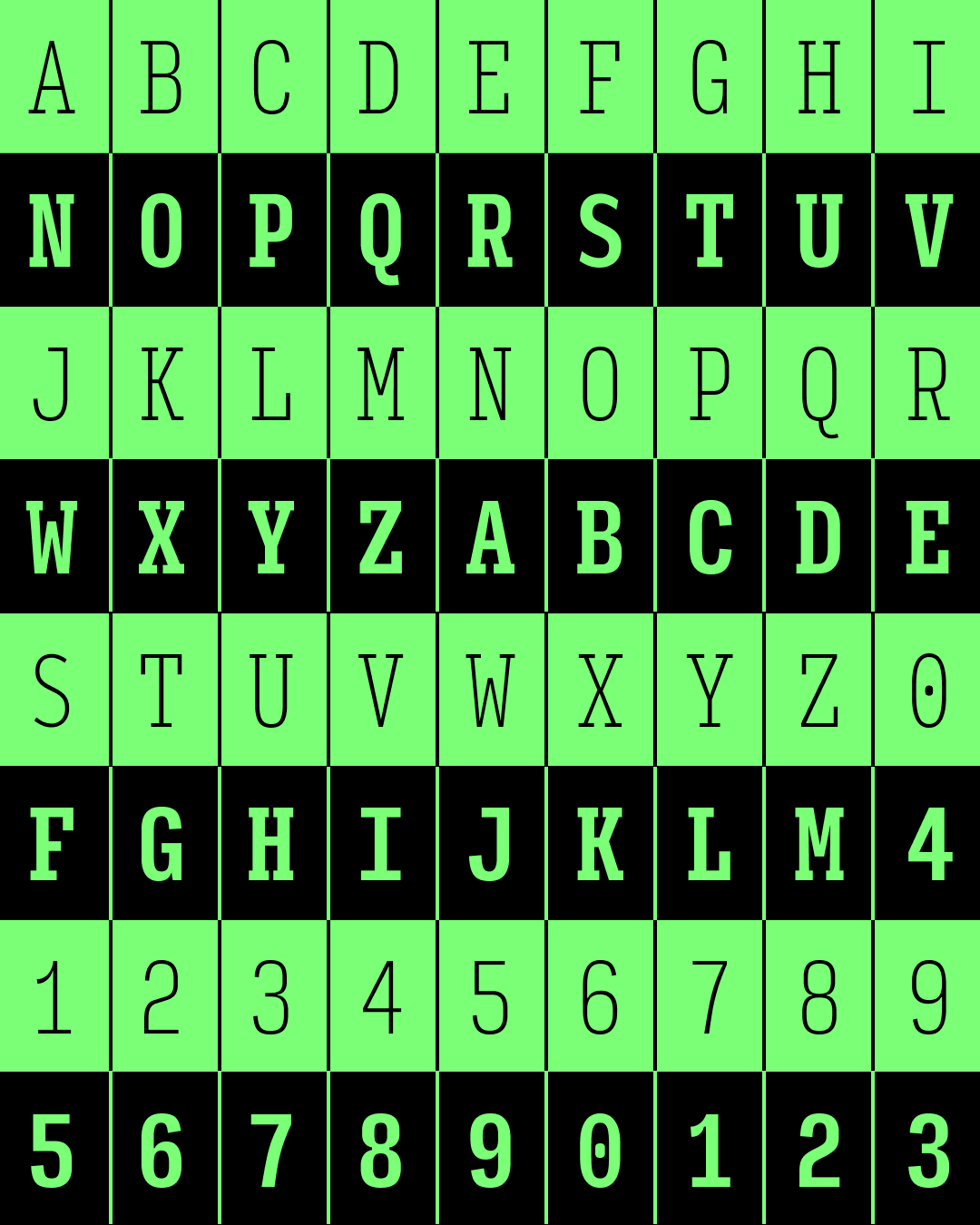September’s Font of the Month: Input Cipher

The “font” vs “typeface” distinction has never been one that I’ve particularly cared about. I tend to use the words more-or-less interchangeably, and whether you are talking about an OTF font file or the designs of letterforms, I can always tell what you mean.
If we’re going to split typographic hairs, the distinction between “characters” and “glyphs” is far more interesting to me. By “characters” I mean the abstract symbols that get encoded into our documents (the concept of the letter A), and by “glyphs” I mean the specific drawings that represent those symbols (a particular rendition of the letter A in a particular font).
I don’t mean to get into a whole semiotics discussion here, but I think it’s useful to look at the typography we do as a veil draped over the underlying sequence of characters that make up our documents. In the Latin script, a lot of the time that veil is essentially transparent—you type an A, you see an A. But in other writing systems, and even in advanced Latin typesetting, the character/glyph relationship can become more important and more complex—think of ligatures, where multiple characters are represented by a single glyph, or OpenType alternates, where multiple glyphs can represent the same character.
A font is essentially a database that maps the characters that we type to the glyphs that we see. And this month I am sending you Input Cipher, a font that highlights the glyph/character relationship by completely destroying it.

Input Cipher is the typographic equivalent of the decoder ring that your childhood self might have found inside a cereal box. You can type out a message in the font, and then use a variable axis to “encrypt” the text using a handful of common substitution ciphers like ROT13, where the basic Latin alphabet is rotated 13 letters so that A becomes N, B becomes O, C becomes P, etc.
I put “encrypt” in quotes because your message is not actually getting encrypted: the glyphs you see will change, but the underlying characters you typed stay exactly the same. Try using a screen reader or copying some ciphertext and pasting it elsewhere—the original message is untouched! (A screenshot will capture it, though. 😉)
The cipher axes rotate through A-Z (Caesar’s cipher, including ROT13), the ASCII character set (including ROT47), and 0-9 (including ROT5). In addition, you can map A-Z to its reverse (Atbash), redact the text completely, and use the Decode axis to gradually reveal the original message. There are also bonus OpenType features that can read and write Morse code, which you can type with dots and dashes, like this: .... . .-.. .-.. ---

I’m no cryptography expert, but even I know that these ciphers are of little cryptographic value—it would be easy for someone to crack these codes by tracking double letters, letter-frequency, and other codebreaking techniques.
But data security is not really the point of this font. The point is to have fun! Send secret messages to your friends…or your enemies. Decrypt messages from others by trying to locate the inverse axis positions. Use the Decode axis to quickly scramble and reveal your text in animations or interactive media. Or, just bask in the cognitive dissonance that comes with typing a letter ands seeing an entirely different one appear.

This isn’t the first font to encode ciphertext, nor is it unique in offering obfuscation and redaction (I love LTR NCND’s typewriter-y take). But I don’t know of many fonts that apply glyph substitution so extensively across variable axes. With over 11,000 letter substitutions occurring in rapid succession, Input Cipher turned out to be an interesting test case of where we are with variable font support at the moment. Web browsers, Photoshop and Figma seem to do fine with these axes, at least on my computer. InDesign does nothing, and Illustrator just crashes. 😂 So what I’m trying to say is…your mileage may vary!
I don’t love the idea of sending you a font that doesn’t work everywhere, but I think it’s also helpful to have publicly-available edge cases for app developers to test with. And even if you can’t use the font in your favorite app, I worked with Nick Noble on a browser-based demo page that you can use for all your encrypting needs!
If all of this cipher nonsense isn’t for you, I hope you enjoy the sneak peek of Input Serif Mono, the newest member of the Input family of coding fonts. Omitted from Input’s original release of Sans, Serif, and (Sans) Mono in 2014, it’s the centerpiece of a long-overdue update that I’ve been working on with the help of Ruggero Magrì. Like its sans serif predecessor, Input Serif Mono sets itself apart by offering a series of widths in addition to the usual weights, giving you the power to control the proportions of the monospace grid.
